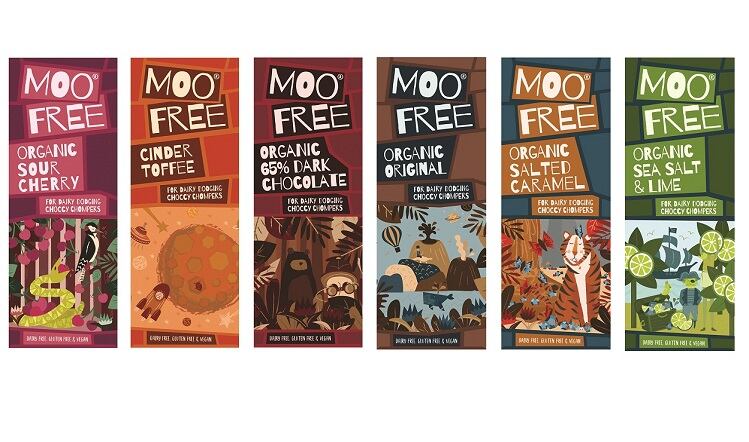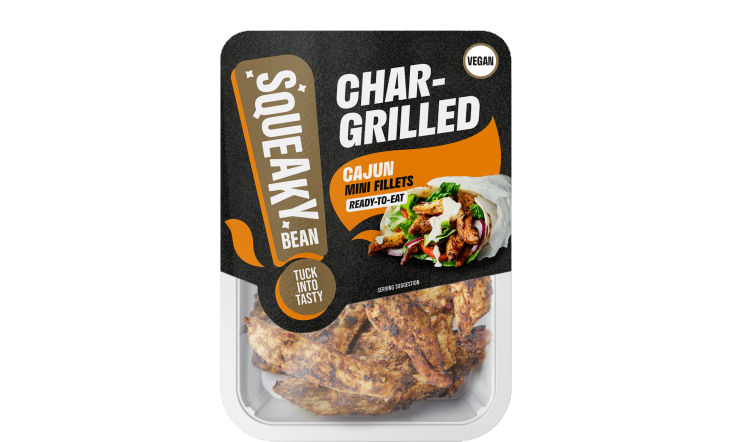“While plant-based may have been perceived as a niche market some years ago, consumers’ concerns for their health, the environment and animal welfare have increased in recent years. Consequently, this market is rapidly expanding and becoming mainstream,” notes Fanny Dezert, business development manager, flavours EMEA, at MANE.
This has prompted MANE, in common with other flavour houses, to turn up its focus on flavouring solutions for plant-based foods.

“As a flavour house, it is important to be able to tackle the taste challenges of the plant-based sector, especially as they are more numerous and complex compared to animal-based protein foods. In plant-based alternative meat products, the flavouring plays a big part; it is a key element that provides taste to the end-product,” she adds.
However, the hurdles to formulating flavoursome plant-based products are many. MANE cites the three biggest challenges as: masking the off-notes of plant ingredients, understanding the interactions between flavours and other ingredients and managing flavouring systems during production processes.
Taking the masking challenge first of all, MANE says it has clustered these off-notes into specific groups to enable precise analysis of the sensory challenges.
“The main off-note groups we have identified are cereal, beany, hay and bitterness. Our expert panels are trained to recognise these descriptors when evaluating foods containing different plant-based ingredients such as pea, soy, chickpea, lentil, oat and rice,” explains Dezert.
MANE’s flavourists now rely on a database of flavouring solutions that have been adapted for use with products that are made from different plant proteins and their corresponding off-notes.
“Using this descriptor approach, MANE scientists have been able to quickly find solutions for new and emerging sources of ingredients such as mycoproteins and insects. Our SENSE CAPTURE Mask range was specifically developed to mask off-notes from plants and other emerging ingredients,” says Dezert.

A holistic approach
In order to tackle the taste challenges associated with plant proteins, Kerry believes that a holistic farm-to-fork strategy is necessary. An example of this is the company’s approach to modulating pea protein, which involves the entire supply chain.
“The amount of protein, how it was extracted and how it was processed all play a critical role in determining the types of off-notes found in the finished application,” explains Melissa Muldowney, global marketing director for savoury taste at Kerry.
Using its sensory capabilities, Kerry has clustered protein off-notes into four groupings: cardboard, waxy and metallic; hay-like, barnyard and earthy; green, potato and earthy; and fermented and sulfury.
The company offers a range of technologies to address taste and masking issues under its Tastesense Masking umbrella, but emphasises that this is just one piece of the flavour jigsaw.
It says its Tastesense Salt solutions help build the perception of sodium when reducing salt in plant-based applications, the AuthenticSavoury range improves the savouriness and authenticity of plant-based foods and Red Arrow smoked ingredients deliver a traditional smoke and grill flavour while enhancing fatty and tallow notes.
Ironing out imbalances

In addition to requiring masking of unpleasant flavour characteristics, the protein base also presents flavour imbalances that need to be smoothed out, as Sylvain Jouet, global product manager, savoury, at Givaudan, explains:
“Protein tends to trap flavour molecules in its structure and not all flavour components are trapped in the same way, creating profile imbalances,” Jouet says. “Sometimes, to balance the flavour, some components need over-expression; this takes experience and skill.”
Jouet points out that an understanding of the interactions between the ingredients in the food product is also key, so that flavour solutions perform well in a high protein matrix and are able to withstand different manufacturing processes.
One example of this knowledge in action is Givaudan’s new approach to transform the taste experience of meat substitutes created from Textured Vegetable Protein (TVP).
“Conventionally, flavour has been added after the texturing process, producing an intense but short-lived experience. Adding flavour during or before texturising is not commonly done because the flavour affects the texture of the product and the flavour performance is affected by the texturisation process,” explains Jouet.
Givaudan has developed strategies to produce a much longer-lasting, authentic meat flavour which, when combined with post-texturising marinating, is said to transform the taste of plant-based TVP.
Givaudan is also using leading the way on the use of AI (Artificial Intelligence) to accelerate and optimise flavour development. In February this year the Swiss flavour house launched its Advanced Tools for Modelling (ATOM), which promise to minimise trial and error in the flavour development process, open new “creative doors” and dramatically cut time to market for new products.
“The tools identify positive and negative flavour drivers and explore ingredient synergies to generate new options and insights aligned with consumer preferences,” notes Jouet.
Pairing with pea proteins
Synergy also underlines the need for careful consideration of the base material and how flavours interact with undesirable flavour notes that are typical of proteins such as pea and soy.
To this end, the company has developed its ‘Paired to Perfection’ range, which draws on the science of flavour pairing to create a palette of sweet flavours for pea-based products.
“Flavour pairing is the concept of finding two ingredients that share the same aroma compounds, which can be found using GC-MS analysis. When two ingredients share the same aroma compounds, they are more likely to pair well in a recipe, creating a more balanced and rounded overall flavour,” says Chris Whiting, category manager at Synergy Flavours.
He continues: “Our analysis of pea protein found many compounds that we would describe as nutty and caramellic. These notes are also shared with chocolates, caramels and other ‘brown’ flavours, so this was an obvious pairing for pea proteins.”
Synergy’s approach to plant-based flavours focuses on both taste modulation (masking undesirable notes to create a more neutral base) and flavour delivery.
For example, soy-based meat replacement products often have an undesirable cardboard-type flavour note, so Synergy would use soy harmonising flavours to mask some of these notes and then layer other flavours such as chicken and beef on top of this. For products that also call for specific cooking notes, Synergy draws on its toolbox of cooked notes such as grilled, seared and embered to give further flavour direction.
With its dairy heritage, plant-based dairy alternatives are a particular strength for Synergy. Whiting says that one of the toughest challenges in this space is replicating the creaminess and indulgence that consumers expect from dairy products.
“We understand the complex matrix of dairy products like butter, cream and milk and how they can contribute to indulgence and creamy mouthfeel. We can take this knowledge and apply it to the development of natural flavours suitable for vegans,” he says.
Worthy of a halo?
Plant-based foods are often crowned with a health halo and there is growing pressure to ensure products live up to this perception, particularly in light of the impending HFSS advertising ban in the UK.
“Consumers see alternative protein products as providing a healthier option, with the added benefit of being better for the planet and more ethical in terms of animal welfare,” notes Givaudan’s Jouet.
Givaudan says it has a range of natural, clean label solutions to assist with the creation of plant-based alternatives without high levels of fat, sugar and salt.
“For meat substitutes, we create authentic meaty flavours as well as specific culinary cues such as chargrilled or roasted, many of which are vegan,” says Jouet.
New flavour innovation solutions for low sugar, low salt and low fat products are a specific focus area for Symrise. The company’s symlife Taste Balancing solutions are said to help bridge the gap between a healthy and sustainable diet and great taste by optimising the overall taste of plant-based products. There are six dimensions to this approach: rebalance the saltiness perception of products containing less salt; rebalance the sweetness perception of products containing less sugar; add exciting taste sensations like warming, freshness, juiciness etc; build on the richness and complexity of umami; improve mouthfeel by delivering full body; mask undesirable off-notes.
A Birds Eye view: flavour challenges of creating Green Cuisine

Birds Eye launched its Green Cuisine range in 2019, using pea and wheat protein to create meat-free frozen convenience foods such as Chicken-free Dippers and Fish-free Fingers.
Since launch, Green Cuisine has reached household penetration in the UK of 9.2% - an achievement that the company attributes to its emphasis on “taste, texture and satiety”.
“There still exists a perception that plant-based products aren’t as tasty or filling as their meat alternatives and this has historically been a major barrier to consumption. That’s why we put such a focus on taste, texture and satiety when developing all our Green Cuisine products,” says Jess Ali, marketing manager at Birds Eye.
From a technical perspective, Ali says Birds Eye worked closely with its flavour partners, who have developed natural flavour technology that helps to create full flavoured meat substitutes.
“It’s worth noting here that we have worked hard to not add flavour just by adding salt. We continue to look at how we can use the other basic flavours of umami to help deliver savoury notes expected with meat but without having to add a lot of salt,” she explains.
However, Birds Eye’s developers did have to overcome challenges presented by the distinctive background flavours present in the pea and soy protein.
“Soy protein has a beany note while pea protein tastes predictably like peas. This challenge we’ve overcome with great success by identifying this original taste profile before building upon it using natural flavour. It acts as the perfect foundation to add further taste or texture, which is why we sometimes add crumb or coatings that you would expect on meat-based products,” Ali explains.




